Herbal & essential oils have become an increasingly popular way to treat a variety of ailments. They have potential uses for everything from improving a person’s mood to helping someone feel more relaxed and fall asleep more easily. Some essential oils even relieve the symptoms of pain and inflammation, heal irritations on the skin, and boost the immune system.(1) People choose to use essential oils in a variety of ways, such as aromatherapy, and topical application (through the skin) is one of the most natural and most common methods.
Topical Application of Herbal & Essential Oils
Topical essential oils are typically either applied directly to the skin (known as “neat” or “undiluted”) or via a carrier, such as a lotion or another type of oil. To realize how essential oils penetrate the skin, you must understand the anatomy of the skin. All skin has four layers, which are comprised of the stratums corneum, granulosum, spinosum and Basale. The palms of the hands and soles of the feet also contain a fifth layer of skin known as the stratum lucidum.
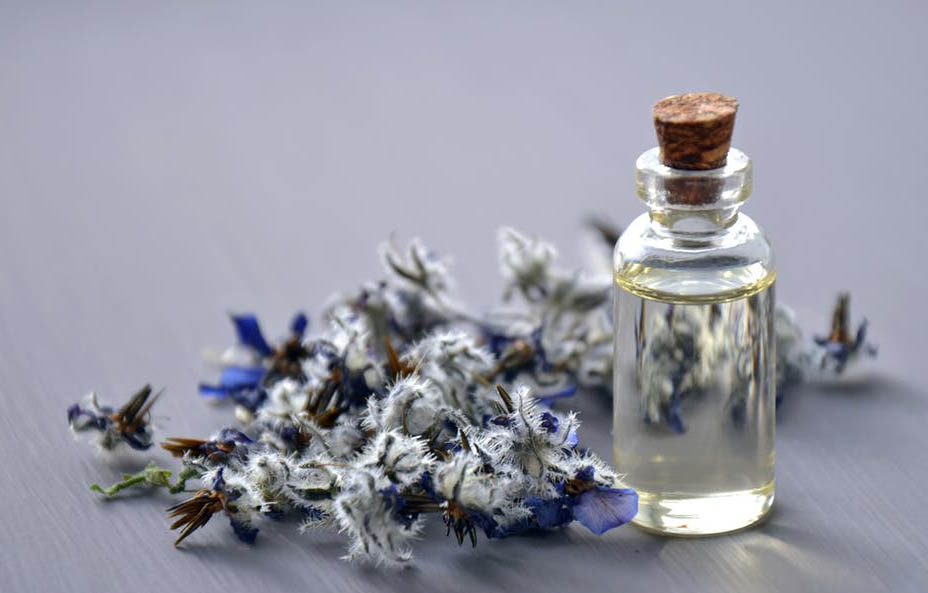
Transdermal absorption (absorption of essential oils through the skin) occurs in one of three ways: the shunt route, the intercellular route, or the intracellular route. The shunt route is a bypass system that means the molecules of the oil directly pass through structures such as sweat glands and hair follicles. The intercellular route means the oil penetrates layers of the skin through the spaces between cells. Finally, the intracellular route occurs when the molecules go directly through the cells in the stratum corneum and continue inward. Areas that contain sweat glands and hair follicles, such as the scalp and face, can be the best places to apply essential oils.(2)
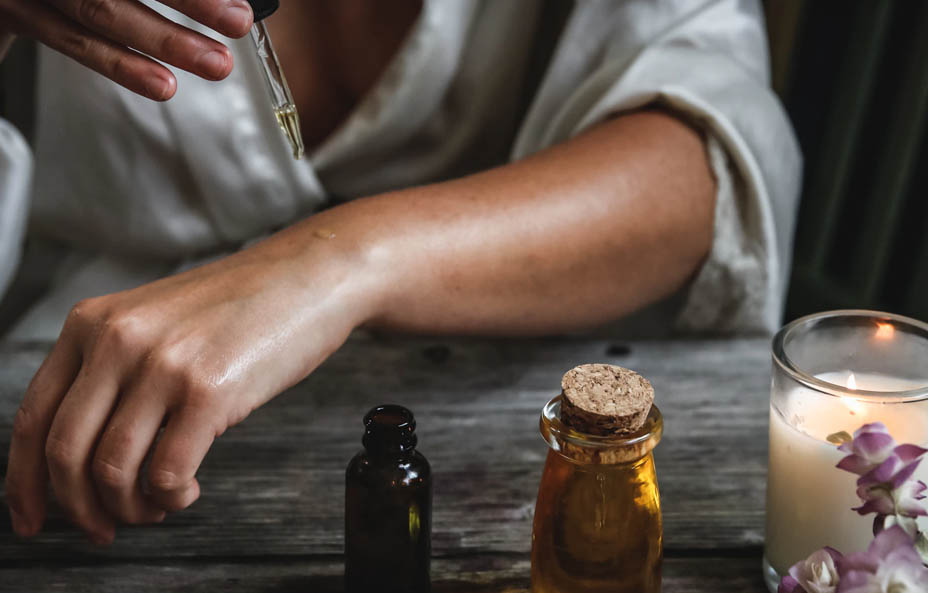
Some essential oils can be used topically on their own but there are benefits to using a carrier oil. Essential oils can evaporate but a carrier oil can slow this process. Plus, carrier oils can have their own therapeutic benefits which can complement the essential oil.
Some of Our Favorite Herbal & Essential Oils
There are many different essential oils, and each one has its potential list of benefits for your skin(3):
- Lemongrass – If you love the smell of citrus, try a lemongrass herbal oil as an astringent. The oil helps to balance your skin’s production of oil and reduces inflammation in the process. The antifungal and antibacterial properties remove toxins and microscopic debris, leaving your skin feeling amazing. However, keep in mind that this oil should be diluted to ensure it works correctly. It also works well as a natural bug repellent.
- German Chamomile – Unlike most essential oils, which are too strong to use on the delicate skin of babies or the elderly, German chamomile essential oil is a soothing product that is safe enough to use on all skin, when appropriately diluted. Its calming properties work to soothe and soften dry skin as well as to relieve symptoms related to hives, eczema, or wounds that are healing slowly. It works exceptionally well when mixed with coconut oil or shea butter.
- Helichrysum – If your skin is prone to acne breakouts, consider trying helichrysum essential oil. The cleansing product includes antibacterial and anti-inflammatory benefits that are beneficial for oily skin or skin with cystic acne. The oil may even stimulate cell growth that helps to fade acne-related scarring.
- Lavender – Lavender herbal oil is beneficial for all skin types and helps to soothe irritation related to itchiness because it is a natural disinfectant. People often use it to relieve symptoms related to sunburn, eczema, hives, or ingrown hairs. Lavender is also helpful for relaxation and sleep. Check out our Lavender & Calendula Healing Salve recipe.

- Sweet Marjoram – This comforting herb is quite aromatic. It has a sweet balsam-like scent which is relaxing. Sweet marjoram essential oil’s warming properties make it a go-to massage enhancement, when blended with a carrier oil.
- Rose Otto – Rose Otto essential oil smells as amazing as it feels. This horticultural oil is popular among people who want to add moisture to dry skin in hopes of gaining a more youthful appearance. This oil, which works best when undiluted, also includes antibacterial properties that help with small blemishes, further promoting younger, healthier skin.
- Rosemary – With its distinct, vigorous scent, rosemary essential oil is a refreshing choice. Rosemary is used in shampoo to help the scalp and energize the user. Much like mints and eucalyptus, rosemary is used to relieve tension and help with alertness.
- Clary Sage – Promoting a calming effect, clary sage has an herbaceous, earthy scent with floral notes. It is often thought to aid women during their menstrual cycles by offering a soothing, meditative effect.
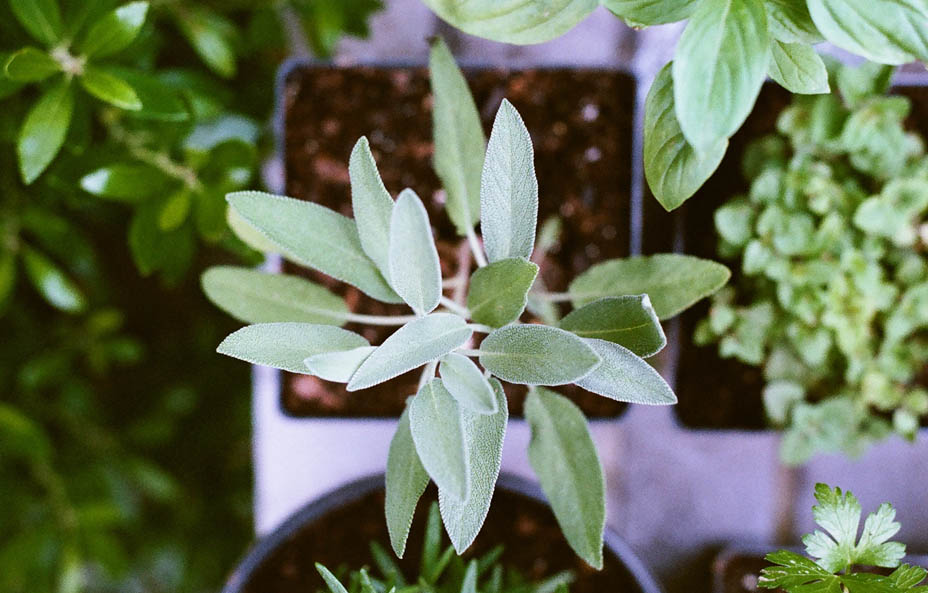
Tips for Using Essential Oils Safely
Just like any health or beauty product, it is important to use essential oils safely.(4) Most importantly, you should always use them according to directions and never apply the oil directly to the skin unless it is specially formulated for you to do so. Consider the type of oil as well; peppermint or cinnamon oils may be healthy for the skin but can cause severe damage to your eyes and nose, for example.
Keep close track of your oils’ expiration dates. Most oils will last about three years, but the older they are or the more they are exposed to oxygen, the less effective they will be. Old oils may even cause an allergic reaction, so pay close attention to changing consistencies or foul odors. Above all else, ensure you order your essential oils from a reputable company that doesn’t add extra ingredients.

If you are looking to control what is in your oils, making essential oils yourself allows for the most oversight. You may consider starting at the very beginning by growing your own fresh herbs at home.
Other Herbal Uses for the Skin
Beyond herbal & essential oils, many herbs are traditionally used to improve skin conditions. This can include culinary uses, poultices, potpourri, and aromatherapy. Growing the plants yourself also has some intrinsic benefits for your skin. By getting up and moving – whether digging holes, composting, or weeding plants – you’re getting more physical exercise. Studies have shown this can lead to a reduction of skin conditions such as psoriasis.(5) Gardening can also be a great stress relief, and that can have a profound effect on your skin.(6)
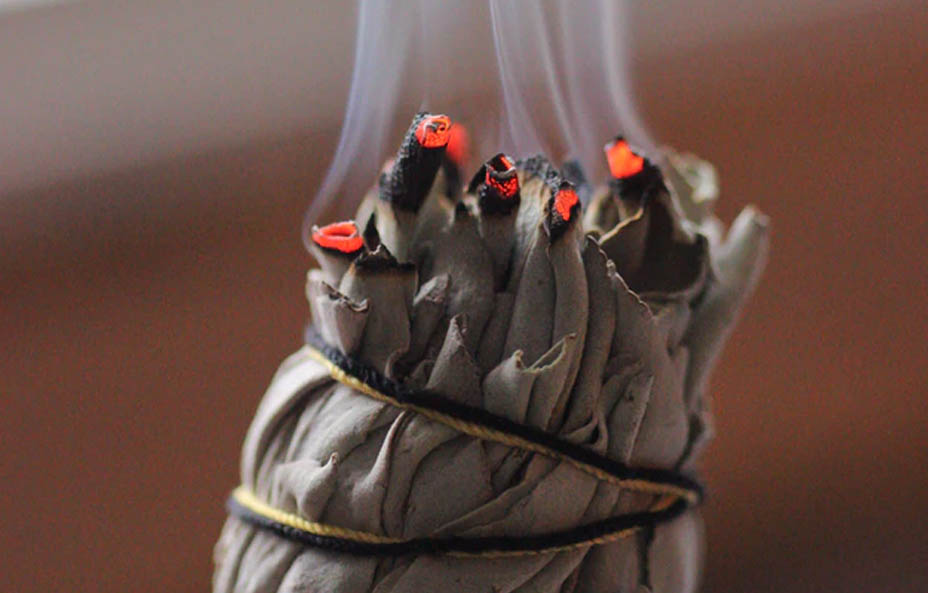
- White Sage – This grows native to the Southwest United States as an evergreen perennial shrub and has been used by Native Americans for many centuries. White sage is often made into an incense or cleansing stick and burned for its aromatic healing properties. The Crow Tribe utilized a strong White Sage tea for eczema and a salve for promoting the healing of sores.(7)
- English ‘Munstead’ Lavender – Has long been in use for culinary recipes, potpourri, perfumes and much more. The potential healing powers of lavender was first introduced to modern medicine by the French chemist René-Maurice Gattefossé.(8) Beyond the essential oil, munstead lavender flowers can be eaten dried, fresh, or fresh-frozen. Lavandula angustifolia, ‘Munstead’ and ‘Hidcote’ are recommended as the best varieties for culinary and medicinal use, as they are non-hybridized. Utilizing fresh lavender flowers in your culinary dishes will bring a lovely aroma to your kitchen.
- Garlic Chives – This member of the Allium family produces a lovely, subtle flavor with hints of garlic and onions without overpowering the dish. Understandably so, as it is kin to onions, leeks, garlic, and scallions. The allicin in garlic chives has many benefits, including antiviral, antibacterial, antifungal, and antiparasitic properties.(9) The natural antioxidants can be beneficial to your skin.
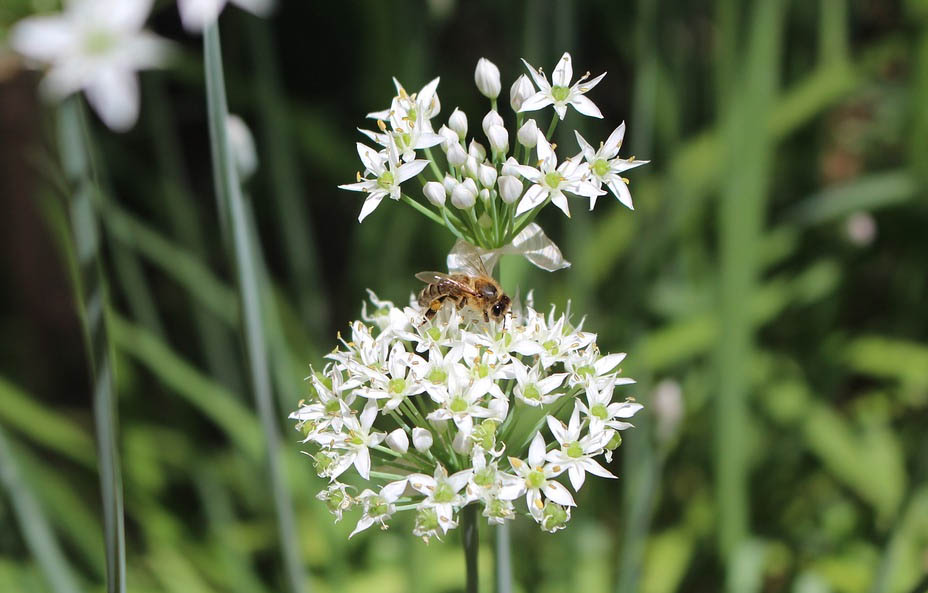
Sources
- https://www.healthline.com/nutrition/what-are-essential-oils
- https://ndnr.com/mindbody/dermal-absorption-of-essential-oils/
- http://cms.business-services.upenn.edu/morrisarboretum-blog/282-plant-aromatics-oils-that-are-essential-for-a-reason.html
- https://www.webmd.com/skin-problems-and-treatments/ss/slideshow-essential-oils
- https://jamanetwork.com/journals/jamadermatology/fullarticle/1158558
- https://www.ncbi.nlm.nih.gov/pubmed/18389157
- https://plants.usda.gov/plantguide/pdf/cs_arlu.pdf
- https://www.gattefosse.com/the-gattefosse-foundation-and-aromatherapy
- https://www.medicalnewstoday.com/articles/275009.php

Thank you for sharing this post! I feel more confident in the essential oils I got from Wise woman herbals.